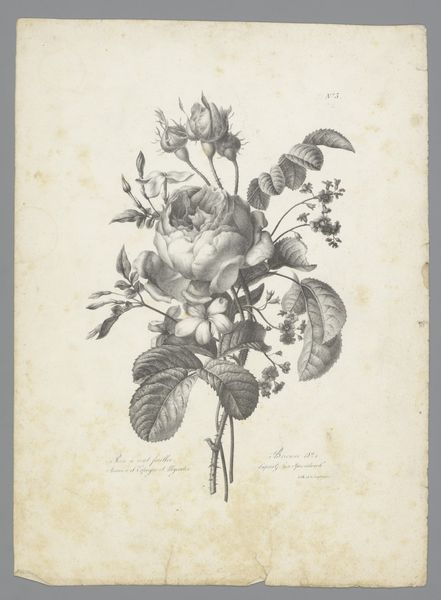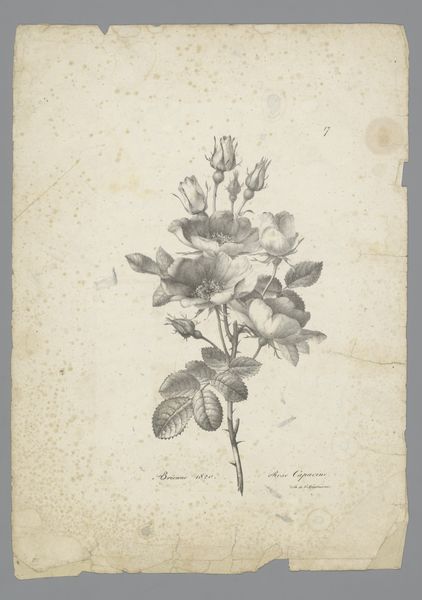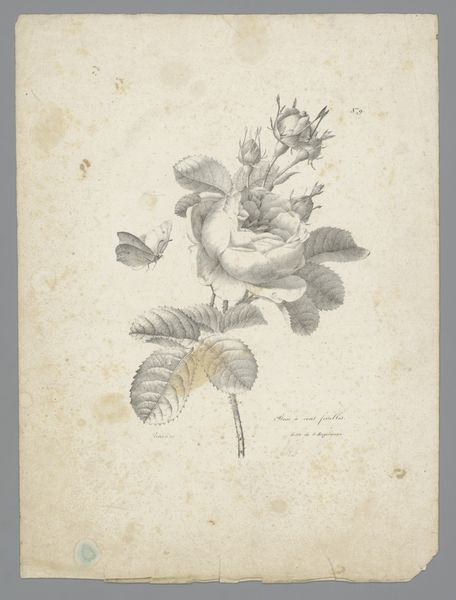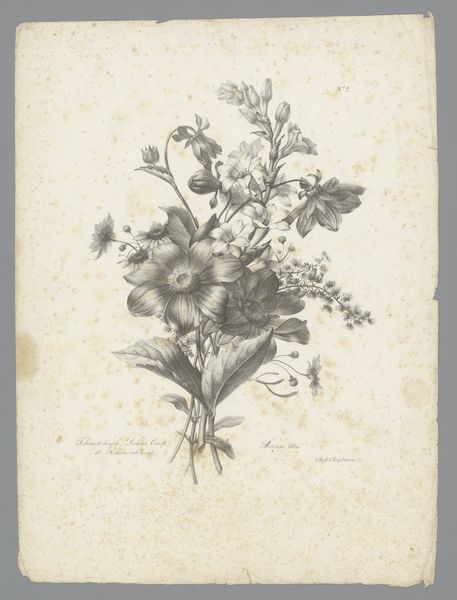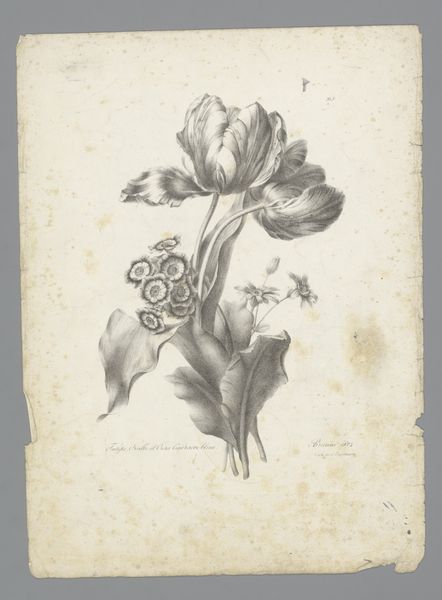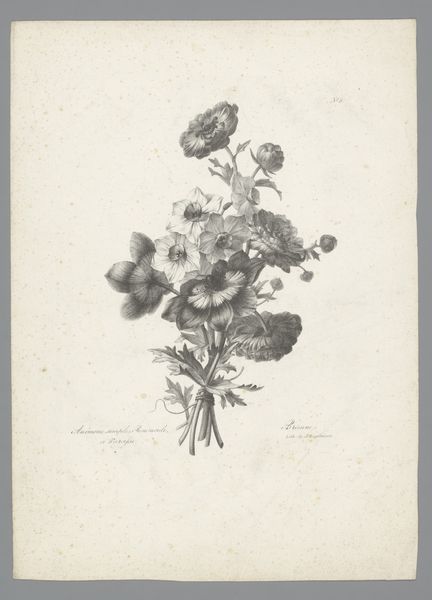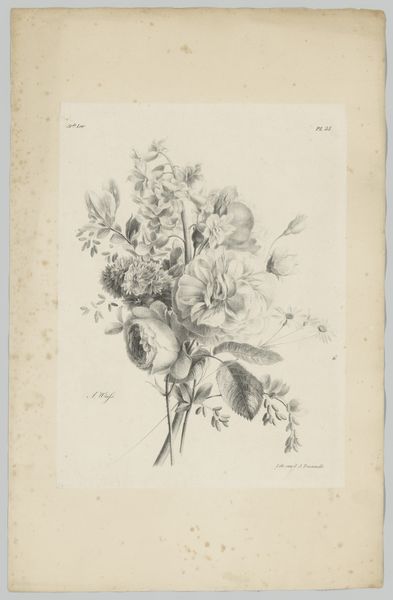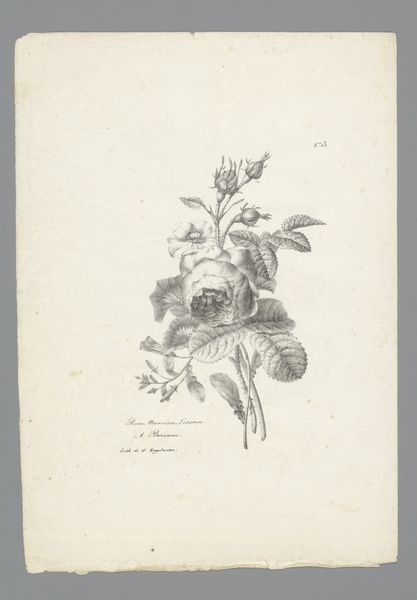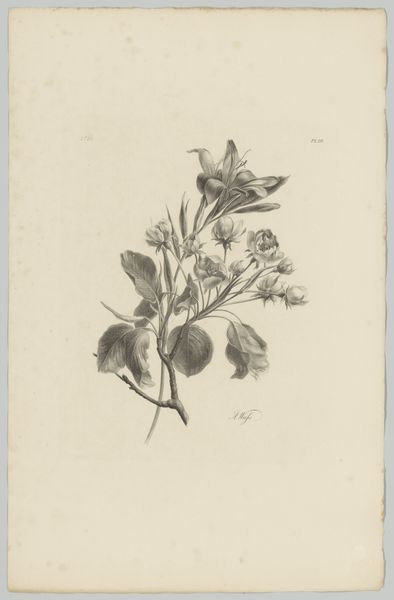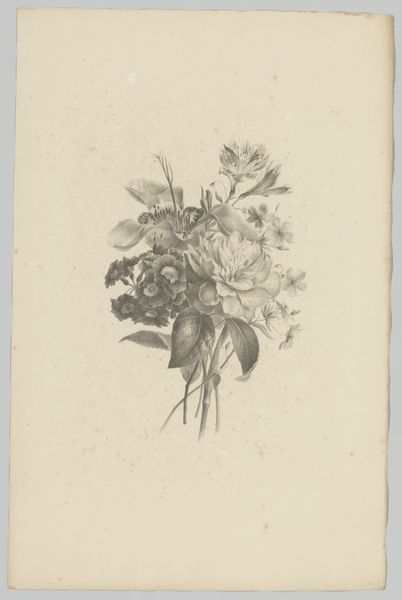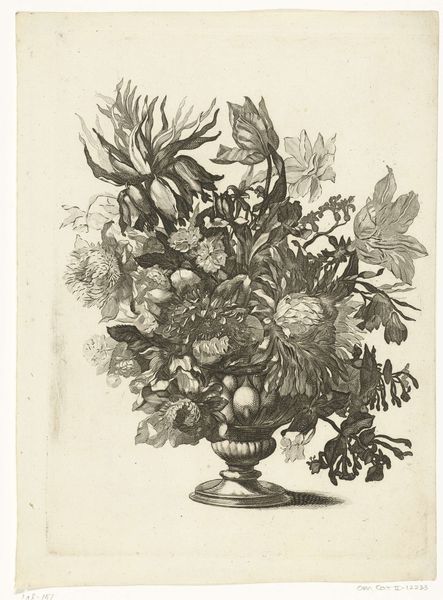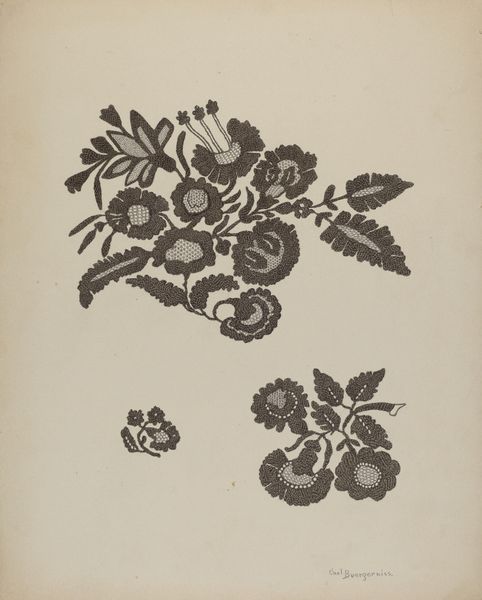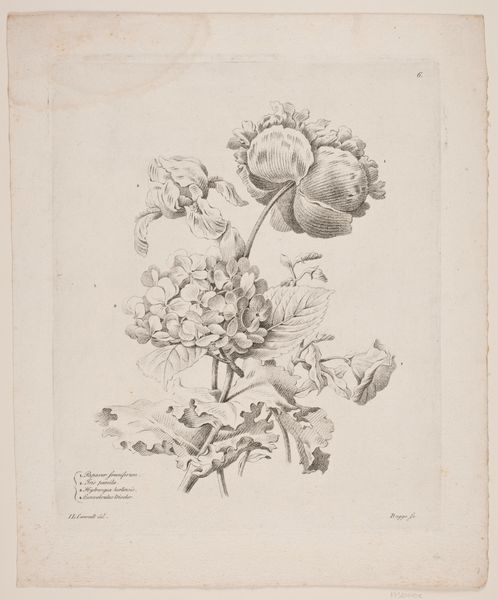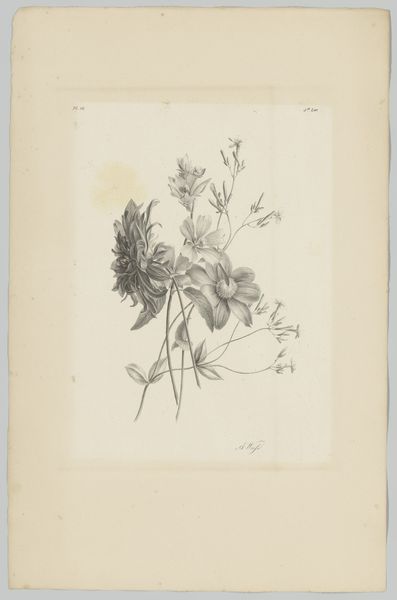
Boeket met rode anjelier, quatre saisons-roos en boterbloem 1824
0:00
0:00
drawing, pencil
#
drawing
#
romanticism
#
pencil
#
realism
Dimensions: height 360 mm, width 275 mm
Copyright: Rijks Museum: Open Domain
Curator: Here we have a drawing entitled "Boeket met rode anjelier, quatre saisons-roos en boterbloem," or "Bouquet with Red Carnation, Quatre Saisons Rose, and Buttercup," created in 1824 by Auguste Piquet de Brienne. Editor: The level of detail is really striking for what seems to be a relatively straightforward pencil drawing. It has a quiet, almost academic feel to it. Curator: Right, Brienne was known for his detailed botanical studies, and this drawing, housed in the Rijksmuseum, really exemplifies the artistic and scientific interests of the time. You see this merging in Romanticism and Realism. Editor: Well, it is more than a straightforward illustration, though. The material itself—pencil on paper—speaks to accessibility. Think about who had access to pigments, oils versus pencils at the time and how these decisions affected the creation and study of natural specimens. Curator: Indeed, the choice of pencil allowed for incredible precision, catering to scientific accuracy but it’s also suggestive of social factors, too. Pencil drawings could circulate among a different audience than paintings. They were used as patterns, in publications... they have a public role to play. Editor: I wonder if Brienne prepared his own pencils? Think of the labor involved in crafting each individual tool. Curator: An interesting point, and the very act of documenting these flowers immortalizes specimens and makes the act of observing them a contribution to art history as well as scientific research. In the era when colonialism thrived, it's likely the species represented would be associated to economic value. Editor: The consumption of such imagery as symbols of wealth and cultivated taste—there's something very powerful and deeply intertwined within that relationship to these objects from nature. Curator: A beautiful example of how an ostensibly simple flower study reflects broader artistic, scientific, and indeed social currents of its time. Editor: It really makes you appreciate the layers of making, seeing, and knowing contained within one drawing.
Comments
No comments
Be the first to comment and join the conversation on the ultimate creative platform.
